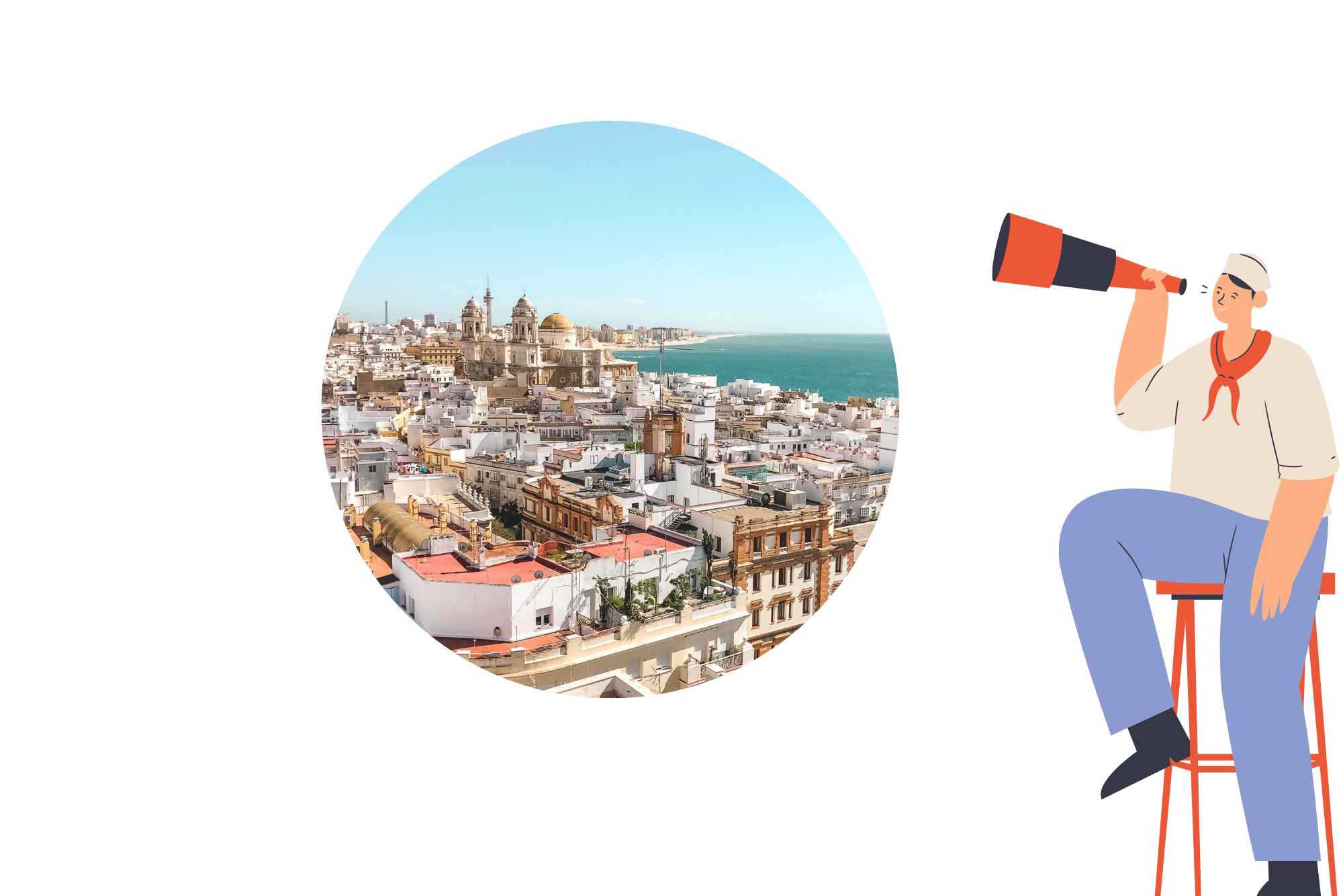The Ancient Beginnings of Cádiz
Cádiz, one of the oldest continuously inhabited cities in Europe, boasts a history that stretches back over 3,000 years. Founded by the Phoenicians around 1100 BCE, this coastal gem was originally known as Gadir. Its strategic location on the Atlantic coast made it a vital hub for trade and cultural exchange. The Phoenicians established Cádiz as a trading post, connecting the Mediterranean with the Atlantic, and leaving behind a legacy of maritime prowess and cultural influence.
Roman Cádiz: A Flourishing Port City
Under Roman rule, Cádiz, then called Gades, flourished as a prominent port city. The Romans recognized its strategic importance and invested heavily in its infrastructure. Amphitheaters, aqueducts, and temples were constructed, some of which still stand today as a testament to the city’s rich Roman heritage. During this period, Cádiz became a center for commerce, attracting merchants and settlers from across the Roman Empire.
The Moorish Influence on Cádiz
In the 8th century, the Moors conquered Cádiz, bringing with them a new era of cultural and architectural transformation. The city became part of the Al-Andalus region, known for its advancements in science, art, and architecture. The Moorish influence is still evident in Cádiz’s narrow streets, intricate tilework, and historic landmarks. This period also saw the blending of Islamic and Christian cultures, shaping the city’s unique identity.
The Age of Exploration and Cádiz’s Golden Era
The 15th and 16th centuries marked a turning point for Cádiz as it became a key player in the Age of Exploration. Christopher Columbus set sail from Cádiz on his second voyage to the Americas, solidifying the city’s role in Spain’s maritime expansion. The wealth flowing in from the New World transformed Cádiz into a bustling port and a center of trade and commerce. This era, often referred to as Cádiz’s Golden Age, saw the construction of grand buildings and fortifications that still define the city’s skyline.
The Siege of Cádiz and the Napoleonic Wars
In the early 19th century, Cádiz played a pivotal role in the Napoleonic Wars. The city withstood a prolonged siege by French forces, demonstrating its resilience and strategic importance. During this time, Cádiz also became a symbol of Spanish resistance and a beacon of hope for those fighting against Napoleon’s domination. The city’s fortifications and defensive strategies were instrumental in repelling the French forces.
The Birthplace of the Spanish Constitution
Cádiz holds a special place in Spanish history as the birthplace of the country’s first constitution. In 1812, during the Peninsular War, the Cortes of Cádiz convened to draft a constitution that would lay the foundation for modern Spanish democracy. Known as “La Pepa,” this historic document was a milestone in the fight for freedom and equality. Visitors can explore the Oratorio de San Felipe Neri, where the constitution was debated and signed.
The Decline and Revival of Cádiz
Following its Golden Age, Cádiz experienced a period of decline as other ports gained prominence. However, the city’s rich history and cultural heritage ensured its survival. In the 20th century, Cádiz underwent a revival, with efforts to preserve its historic landmarks and promote tourism. Today, the city is a vibrant blend of old and new, attracting visitors from around the world.
Exploring Cádiz Today
Modern Cádiz offers a unique blend of history, culture, and natural beauty. Visitors can stroll through the historic Old Town, with its charming plazas and narrow streets, or relax on the city’s pristine beaches. A Free tour Cádiz is an excellent way to explore the city’s rich history and discover its hidden gems. From the iconic Cádiz Cathedral to the bustling Mercado Central, there’s something for everyone in this enchanting city.
The Culinary Delights of Cádiz
No visit to Cádiz is complete without indulging in its culinary delights. The city’s coastal location ensures a bounty of fresh seafood, while its rich history has influenced its diverse cuisine. From traditional tapas to innovative dishes, Cádiz offers a gastronomic experience that reflects its cultural heritage. Be sure to try the local specialty, tortillitas de camarones, a crispy shrimp fritter that is a favorite among locals and visitors alike.
The Festivals and Traditions of Cádiz
Cádiz is renowned for its vibrant festivals and traditions, which showcase the city’s lively spirit and cultural diversity. The Cádiz Carnival, one of the oldest and most famous in Spain, is a must-see event that features colorful parades, music, and elaborate costumes. Other notable celebrations include the Semana Santa processions and the Feast of Corpus Christi, which highlight the city’s deep-rooted religious traditions.
The Modern Significance of Cádiz
Today, Cádiz stands as a testament to the resilience and adaptability of its people. The city’s rich history offers valuable lessons about the importance of cultural exchange, innovation, and perseverance. A Free walking tour Cádiz not only provides a glimpse into the past but also highlights the city’s ongoing efforts to preserve its heritage and embrace the future. Cádiz continues to inspire visitors with its timeless charm and enduring legacy.







